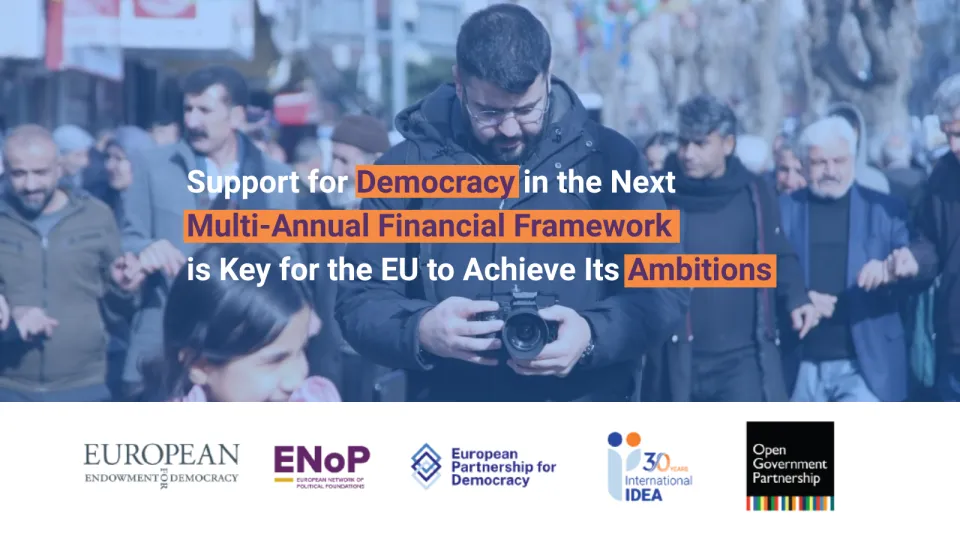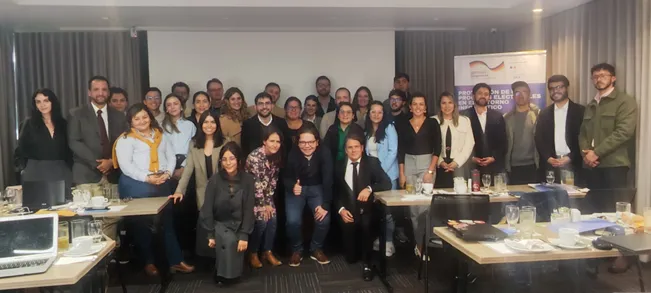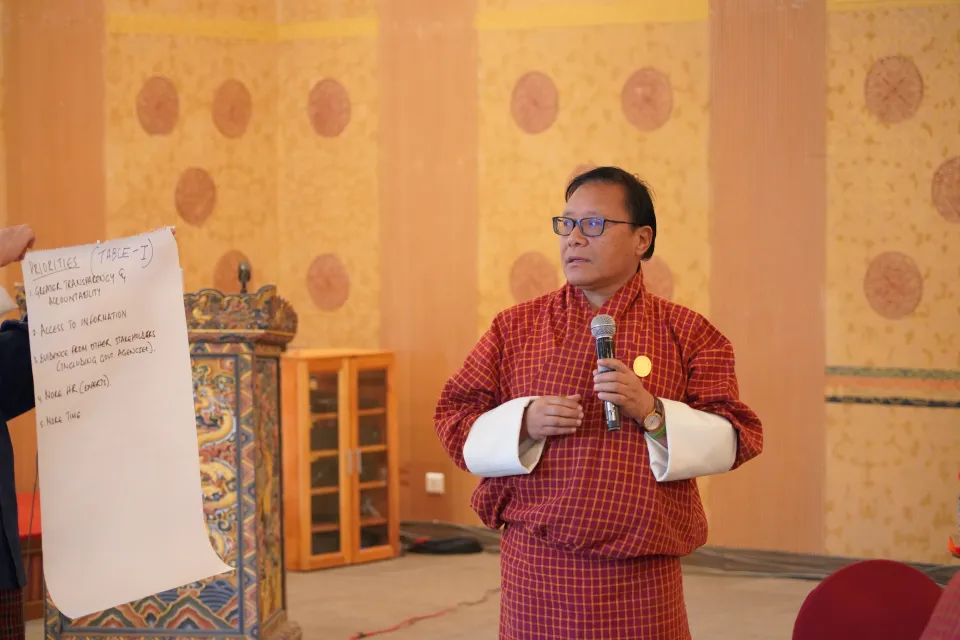Wildfires, Hurricanes, Floods and Earthquakes: How Elections are Impacted by Natural Hazards

The recent postponement of the local polls in Karachi, Pakistan due to the extreme weather (Khan 2022) is an example of how natural hazards can affect an electoral process. To date, the floods have submerged a third of the country, destroying critical infrastructure and killed more than 1,000 people.
Este artículo está disponible en español.
Election management bodies (EMBs) have always had to cope with the risk of natural hazards, but the threat posed by such phenomena has become more apparent in recent years. Not only has the Covid-19 pandemic identified a range of vulnerabilities in our democratic institutions (International IDEA 2020), but democracy is also set to be shaped in complex ways by climate change (Lindvall 2021). In recent decades, the number of natural disasters increased from under 300 per year in the 1980s to over 800 per annum in the 2020s (Munich Re 2022). This dramatic development is consistent with the predictions of climate scientists (IPCC 2021) and it is thus highly likely that elections will more frequently be threatened by natural hazards in future years.
How do natural disasters affect elections?
Evidence from around the globe indicates that natural hazards such as hurricanes, floods, wildfires, snowstorms, drought, earthquakes, tsunamis and volcanic eruptions are impacting subnational and national elections (See Table 1). Natural disasters can trigger the postponement of elections, impact electoral operations, affect campaigns, and voter turnout and thereby limit voter choice.
The postponement of an election can breach legal requirements regarding the electoral calendar, can leave a country, region, or municipality with representatives whose term limits have expired, or in some cases legislative seats that remain empty creating a power vacuum. Postponed elections due to natural disasters include the Haiti 2010 legislative election, postponed for 10 months in the aftermath of an earthquake and Hurricane Tomas (Towriss 2022). National and subnational elections have also been delayed in Jamaica (2007), Japan (2011), Pakistan (2022), Papua New Guinea (2019) and the USA (2006).
Table 1. Natural hazards that have had an impact on electoral processes
Country |
Natural hazard / Period |
Election |
Belize |
Hurricane Eta, October-November 2020 |
General election, 11 November 2020 |
Bosnia and Herzegovina |
Floods, May 2014 |
General election, 12 October 2014 |
Canada |
Snowstorm, October 2019 |
General election, 21 October 2019 |
Germany |
Floods, 14-15 July 2021 |
Federal election, 26 September 2021 |
Haiti |
Earthquake, 12 January 2010, Hurricane Tomas, 5 November 2010 |
Presidential and Legislative Election, 28 November 2010* |
Indonesia |
Floods, December 2020 |
Regional elections, 9 December 2020 |
Jamaica |
Hurricane Dean, August 2007 |
General election, 3 September 2007* |
Japan |
Earthquake and Tsunami, March 2011 |
Unified elections, 2011* |
Malawi |
Cyclone Idai, March 2019 |
General elections, 21 May 2019 |
Mozambique |
Cyclone Idai, March 2019 and Cyclone Kenneth, April 2019 |
General and Provincial Assembly Elections, 15 October 2019 |
Pakistan |
Floods, June–August 2022 |
Local government elections in Karachi division, August 2022* |
Papua New Guinea |
A volcanic eruption of Mt Ulawun, 26 June 2019 |
Local-level government elections, 20 July to 25 July 2019* |
Somalia |
Drought, 2015–ongoing |
Somaliland, Parliamentary and local elections, 31 May 2021* |
USA |
Hurricane Sandy, October–November 2012 |
Presidential election, 6 November 2012 |
USA |
Hurricane Katrina, August 2005 |
Municipal and Mayoral elections in New Orleans, April-May 2006* |
USA |
Hurricane Juan, 31 October–6 November 1985 |
Gubernatorial election, Virginia, 5 November 1985 |
USA |
Wildfires in California, 2016 and 2018 |
General election, California, November 2016 and 2018 |
USA |
Wildfires in California, Oregon and Washington States, September 2020 |
General elections, November 2020 |
Table 1. Constructed by authors using Asplund, E., & Park, H. Impact of Natural Hazards on Elections: A Global Overview. International IDEA, 2022, <https://www.idea.int/news-media/multimedia-reports/impact-natural-hazards-elections> and country information. Note that elections marked with an asterisk (*) were postponed (in the affected region or the whole country) due to natural hazards.
Electoral operations are strongly affected by any natural disaster that happens in the run-up to, or during, polling. Voter registration materials and facilities can be damaged, voters can lose the identity documents that they need to register and to vote (do Rosario 2022), voters can be displaced and require special voting arrangements, and polling stations (and election materials) themselves can be burned, flooded, or otherwise made unusable. Also, law enforcement personnel that typically provide election security may be involved in rescue and relief operations (ECP 2022). Elections held in the wake of the devastating 2019 Hurricane Idai and Kenneth in Mozambique and the 2005 Hurricane Katrina in New Orleans exemplify many of these challenges (do Rosario 2022; Mohan and Roberts 2021).
Weather events can also obstruct election campaigns, as in Malawi in 2019 when campaigning in camps for voters displaced by Hurricane Idai was prevented by camp managers (Masina 2019). Extreme weather events can make climate change more salient as a campaign issue, as happened at the time of the German floods of 2002 (Rudolf and Kuhn 2018) and 2021 (Tharau 2021). In addition, disaster relief aid may be used to buy votes, as was evident following landslides in Colombia in 2010–2011 (Gallego 2018).
Research on the impacts of natural disasters and voter turnout has yielded mixed findings; in some cases, flood-induced disruption has been found to depress turnout, as happened following the 2002 and 2013 floods in Germany (Rudolf and Kuhn 2018) and following Hurricane Sandy in the USA in 2012 (Stein 2015). In other contexts, disasters and disaster relief activities have been found to have mobilising effects. In Pakistan, more people voted following the 2010–2011 floods than otherwise would have been expected (Fair et al. 2017). It could also be that these two effects work in tandem, such that some people are more likely to vote and others less, as was evident following Hurricane Katrina in the USA in 2005 (Sinclair, Hall and Alvarez 2011). Elections held during the early phases of the Covid-19 pandemic experienced declines in turnout for the most part (James and Alihodžić 2020).
When it comes to the choice of party, research findings are again mixed. Voters have been found to punish incumbents for weather events in India (Cole, Healy and Werker 2012) and the USA (Blankenship et al 2021). On the other hand, voters in Russia and Spain appear to be more likely to vote for the incumbent party in the wake of wildfires (Lazarev et al 2014; Ramos and Sanz 2020) or earthquakes in the case of Italy (Masiero and Santarossa 2021). Several studies have found that voters assess parties’ environmental performance, and show that vote choice in the wake of a natural disaster is conditioned by voters’ perceptions of how well parties have developed policies to adapt to and provide relief when nature wreaks havoc with communities (Arceneaux and Stein 2006; Baccini and Leemann 2021; Birch 2022). It is therefore not surprising that in some contexts natural disasters have been found to increase support for Green parties (Hoffmann et al 2021; McAllister and bin Oslan 2021; Vailopoulos and Demertzis 2013).
The effect of natural disasters on electoral processes and outcomes is highly dependent on context, and on how skilfully governments, EMBs and political parties cope with the challenges posed by hazards and aftermaths of disasters, especially when compounded by public health emergencies such as Covid-19 (International IDEA 2022).
How can elections be protected from natural disasters?
There is a range of approaches that electoral administrators can use to protect elections from natural disasters. These can be grouped into three broad categories: risk management, resilience-building and crisis management (International IDEA 2021). Risk management and resilience-building are proactive strategies, whereas crisis management is a reactive strategy.
In the realm of electoral administration, the aim of risk management is to ‘prevent or avoid risks that may negatively impact the integrity of electoral processes’ (Alihodžić 2021). Implementation of risk-management processes allows organizations to systematically identify and manage various risks—both process- and context-related—which often interrelate. Risk management works best when it is carried out across government institutions and other non-state actors (International IDEA 2021). In the context of natural disasters, this might involve strengthening formal collaboration between EMBs and other state agencies. For EMBs, it is important to understand and align with various practices that reduce the risk of dangerous fires—such as forestry practices, or exposure to floods—such as following building codes that prevent the construction of houses in flood-prone areas, or simply ensuring that the timing of elections does not fall in the hurricane or the drought season.
Resilience is the ability to maintain continuity in the face of stresses and shocks. In the electoral sphere, resilience-building includes efforts to ‘strengthen electoral processes and institutions so that they can withstand negative impacts from risks that materialize’ (Alihodžić 2021). In the context of disaster-prone areas, resilience-building might involve, for example, the establishment of contingency plans, that is ex-ante procedures and processes that enable voters to exercise their franchise in the event of displacement or loss of documents due to natural hazards. In recent years, many Californian county election boards have introduced contingency plans to mitigate disruptions caused by natural disasters and other events (Birch and Fischer 2022). Other examples may include the recognition of election personnel, facilities, materials and events (as a whole or a combination) as part of national or subnational critical infrastructure, which is the case in Canada and the USA (DHS 2022; CSA 2022; GoC 2022; International IDEA 2019).
Crisis-management practices are a suite of reactive measures that are taken to restore normalcy that is lost due to various crisis situations. In the context of elections, crisis management aims to ‘enable effective recovery when electoral processes and institutions are derailed’ (Alihodžić 2021). For example, large-scale natural disasters, such as flooding or wildfires, may interrupt electoral processes despite risk management and resilience-building efforts. Lessons from postponed and held election during the first wave of Covid-19 includes numerous examples of crisis-management practices (Asplund & James 2020; Birch et al 2020; EIP 2022; International IDEA 2020; International IDEA 2021). The existence of crisis-management processes will determine the effectiveness of electoral administration and other state institutions in restoring the continuity of the electoral process.
A single framework that combines best practices from risk management, resilience building and crisis management will further strengthen a whole-of-society approach to the delivery of elections during emergencies.
|
The Impact of Natural Hazards on Elections Project To gain a better understanding of how natural hazards can have an impact on elections, International IDEA has initiated a project on the topic that seeks to provide findings and recommendations for the election and disaster risk reduction community. To date, International IDEA has published a dashboard that provides an overview of elections that have been affected by natural hazards as well as three case studies focusing on elections and natural hazards, namely: Hurricane Idai and Kenneth ahead of the October 2019 General and Provincial Assembly elections; wildfires amid the 2016 and 2018 US General Elections; and the November 2010 Haiti Presidential and Legislative election following the January 2010 earthquake and Hurricane Tomas. All the case studies are available on International IDEA’s ‘impact of natural hazards on elections’ page, which will be updated with new analyses and publications on a regular basis. |






